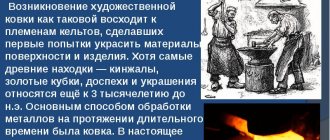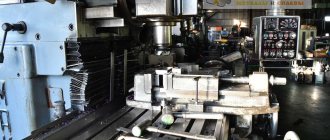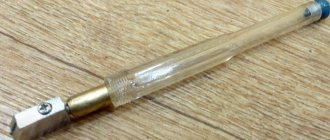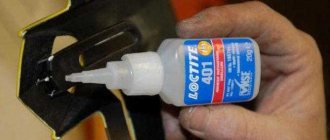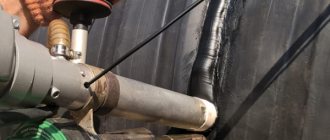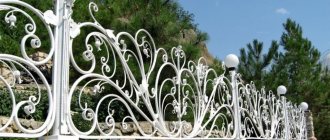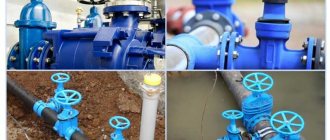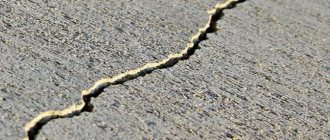Forging
- as a rule, high-temperature forming of various metals heated to forging temperature.
«Cold forging"
, carried out without heating the deformed metal, refers to plumbing.
Each metal has its own forging temperature, depending on its physical (melting point, crystallization) and chemical (presence of alloying elements) properties. For iron the temperature range is 1250–800 °C, for copper 1000–650 °C, for titanium 1600–900 °C, for aluminum alloys 480–400 °C.
Blacksmith at the anvil
Content
- 1 Terminology
- 2 Blacksmithing operations
- 3 Forging iron and steel using late 19th century technology 3.1 Tools
- 3.2 Types of forging 3.2.1 Horse shoeing
- 3.2.2 Artistic forging
- 3.2.3 Manufacturing of forged products
- 4.1 Famous monuments of artistic forging
Original forged products for the home
Beautiful, elite artistic forging can decorate the interior of an apartment, design a house, and highlight the territory of a garden.
Iron produces real works of art, masterpieces.
In the interior of the house, forging opens up new design possibilities. After all, such forged jewelry creates its own, original, unusual style, emphasizing the tastes of the owner. After all, even the smallest forged element will emphasize the individual atmosphere of the room. It is enough to have a forged trinket, a vase, a craft, a picture frame, a fireplace or a watch stand. The peculiarity of such items is that they are exclusive and handmade. Forged products for the home have a number of advantages.
Namely:
- They go with any style, be it Gothic or Provence.
- They are practical, strong and of good quality.
- They combine well with various materials. Be it glass, wood, ceramics, etc.
- They allow you to turn any idea into reality. So forging is done by hand.
- They do not need special care.
- They are versatile and will suit the interior of any room.
In the home interior, forged items can be very diverse. Starting from furniture (sofas and armchairs, chairs, etc.), to other forged elements (mirror, chandelier and shelves).
Certain forged metal products are used in a certain style. For example: in the classic style there will be simple symmetrical patterns. The romantic style will have various flowers and swirls. For example, lily, sunflower, rose, etc. In the Gothic style there will be complex, intricate, symmetrical patterns. In the Baroque style there will be a complex, asymmetrical ornament. In the Renaissance style there will be various designs of fruits and plants. For example, grapevine, leaves. In the Art Nouveau style there will be unusual, asymmetrical pictures. The high-tech style will have smooth, regular lines and angles.
Terminology[ | ]
There are:
- Free.
- Machine.
- Stamping.
Products and semi-finished products obtained by forging are called “ forging”
"
When forging in dies, the metal is confined on all sides by the walls of the die. When deformed, it takes the shape of this cavity (see Stamping, Rotary forging). With free forging
(hand and machine), the metal is not limited at all or limited on one side. In hand forging, the metal or tool is directly impacted with a handbrake, sledgehammer or hammer.
Open forging is also used to improve the quality and structure of the metal. During forging, the metal is strengthened, so-called discontinuities are welded and large crystals are crushed, as a result of which the structure becomes fine-grained and acquires a fibrous structure.
Machine forging
performed on special equipment - hammers with a mass of falling parts from 40 to 5000 kg or hydraulic presses developing forces of 2 - 200 (200 - 20,000 tf), as well as on forging machines. They produce forgings weighing 100 tons or more. To manipulate heavy workpieces during forging, cranes with a lifting capacity of up to 350 tons, tilters and special manipulators are used.
Forging is one of the economical ways to produce blank parts. In mass and large-scale production, die forging is predominantly used, and in small-scale and individual production, free forging is used. When forging, a set of blacksmith tools is used, with the help of which the workpieces are given the required shape and size.
Features and popular types of forged products
The forging method transforms metal and allows you to create unique parts and objects. Forged elements can be seen on fences, entrance groups, stairs inside the house and on the streets, and landscape design. It's beautiful and unusual.
Products with forging elements are quite expensive due to the subtlety and complexity of the work. But they are in great demand. There are several reasons for this.
- Metal itself is a strong and reliable material. Metal products are suitable for installation indoors and outdoors. The only thing to be wary of is corrosion. The problem is solved by special treatment that prevents the appearance of rust.
- Forged products are beautiful. Made to order, they become unique. Forging patterns look elegant - lace, openwork weaving, plant and floral patterns.
- Forging is combined with other materials - wood, brick, glass. This expands design possibilities.
Let's consider what forged products are most often ordered by owners of country houses, cottages, and dachas.
Fencing
Usually these are forged metal fences for the protection and decoration of the local area. They can be deaf, translucent and see-through.
Blank fences are opaque. Suitable for those who want maximum privacy. Forged fences with corrugated sheets are exactly like this: the main fabric is a metal sheet decorated with a forging pattern.
Translucent fences are made similarly to blind ones, but from polycarbonate sheets. They allow sunlight to pass through without shading the area. However, they do not provide complete transparency.
Through-hole structures consist of a specific forging pattern. They open the territory and the house to prying eyes. Fences of this type look elegant and attract attention. Design options are possible - from a laconic pattern to an intricate pattern based on an individual project. To reduce the cost of work, welded structures with forging elements are often used.
Forged elements can complement a fence made of brick, wood, or stone.
Gates and wickets
Decoration of the entrance group is usually ordered along with the fencing. The designs are made in the same style. Forged gates and gates, like fences, can be solid, translucent and through. Moreover, the fence can be closed, and the gate can be openwork and transparent.
Gates are divided into swing and sliding. The first ones consist of two doors that open outward or inward. For them it is necessary to provide space sufficient for opening. Sliding doors consist of a sash that smoothly slides to the side. They are more ergonomic - they open in one plane.
Forged gates can be equipped with an automatic mechanism with the possibility of remote control.
Railings for stairs
Inside the house, forging helps to bring something new and unusual into the interior. The most frequently ordered wrought iron railings decorate the staircase between floors. They are durable and reliable, able to withstand constant load. They are easy to care for - just regular dry and wet cleaning.
Forged staircase railings are made in different styles - modern, classic, vintage, rococo. They create designs with geometric shapes, lace patterns, and natural motifs. You can give it an antique effect.
Railings with forged elements are suitable for turning, marching, and spiral staircases. When designing, safety requirements are taken into account: the height is from 900 cm, and the distance between the posts is no more than 30 cm. If there are children or animals in the house, it is better to reduce this space. In addition, designs with large holes should be avoided.
For external stairs, wrought iron railings are also a good option. They are not afraid of precipitation, temperature changes, and last a long time.
Order the production of fences, gates, railings from masters in this direction. — manufacturer of forged products: from various types of fences to decorative items. The company performs the full range of manufacturing tasks - from measurements to installation. Entrust the work to professionals and enjoy the result.
Forging operations[ | ]
Forging and edging scheme
| Punch (diff) | Broadcast |
| Felling | Tackle |
| Disembarkation | Edit |
| Bending (bending, bending) | Pressure editing |
| Drozhirovka | Punching |
| Calibration | Drawing lines |
| Turning (edging) | Ironing |
| Branding | Piercing |
| Riveting | Pulling (drawing) |
| Forge welding (forging welding) | Firmware |
| Heating the workpiece | Overclocking |
| Notch | Giveaway |
| Basting | Cutting |
| Swage | Rolling out |
| Run-in (billing) | Twisting (torsion, torsion) |
| Stumping | Fixing the workpiece |
| Draft | Coinage |
| Chop | Stamping (stamping) |
DIY forged products
If we talk about hot forging, then in order to make various artistic things with your own hands, you need to have a lot of experience and skill. You will also need special equipment, without which it will be very difficult to carry out all the work. But if you use cold forging, then it is quite possible to make decent products with your own hands.
For this you need:
- Welding skills.
- Spacious room equipped with a welding table. Of course, you can do without such a place and just collect everything on the floor. But with this option it is unlikely that you will get something beautiful and worthwhile.
- Necessary decorative elements.
- Sketches. You can use products that are posted on the Internet as a basis.
- Tools such as welding, tape measure, grinder.
Forging iron and steel using late 19th century technology[ | ]
| The data in this article is as of the end of the 19th century (conversion to modern units of measurement is required). You can help by updating the information in this article. |
Forging is used for different purposes, and because of this, metal processing methods can be different:
- crimping kritsa
- forging, during which compaction and welding of particles occurs, as well as the release of slag from the doughy iron mass (kritsa). - welding
- forging, in which packages consisting of individual pieces heated to a pitch are spliced (see forging welding). - ordinary forging
- compaction and giving the desired shape to an object.
Depending on the size of the processed products, forging is divided into manual
and
mechanical.
Tools[ | ]
| Hook | Poker | extension | Rolling out |
| Screw press | Sledgehammer | Anvil | Rigel |
| Vorotyazhka | Blacksmith fork (fork, slingshot) | Stretch | Handbrake |
| nail shop | Blacksmith mold | Swage | Bracket |
| Bending plate | Blacksmith chisel | Trim stamp | Furnace scraper (ash scraper, scraper) |
| ironer | Blacksmith pliers | Chopping | Shovel (shovel) |
| Presser | Forging block | Mandrel | Stove scoop (ash scoop, scoop) |
| Holder | Forge crank | Clamping | Hot forging machines |
| Liquid container | Blacksmith Hammer | Pyrometer | Cold forging machines |
| Comb gauge | Forge chuck | Tamper | Chair vice |
| Turner | Forging press | Support | Vise |
| Square | Forge punch (forge punch) | Backing stamp | Axe |
| Brand | Blacksmith's coin | Sweeping | Grip (sling) |
| Pincer grip | Forging die | Stand (backing ring) | Shperak |
| Wedge | Scrap | Prism | Stamp (stamp) |
| Wedge pad | Matrix | Rolling mill | Stichel |
| Wedge lining | Chalk | Proshiven | Scrub brush |
| Key | Hammer | Punch | Eccentric clamp |
Types of forging[ | ]
Horse shoeing[ | ]
Shoing a horse is attaching horseshoes to its hooves to protect the hooves from damage[1]. The shoeing of a horse is performed by a farrier - a farrier who has knowledge of veterinary orthopedics and has the skills to handle a horse.
Artistic forging[ | ]
Main article: Artistic forging
Artistic forging is the production of any forged products, for any purpose, by the metal processing method, which has the general name of forging, which necessarily have the properties of a work of art. An explanation close to this formulation can be found in dictionaries on social sciences.
Samples of artistic forging
Manufacturing of forged products[ | ]
Main article: Forged products
In the modern world, it is customary to distinguish between two types of forging: hot and cold.
Hot forging is a traditional blacksmith method of hand forging. Blacksmithing is taught in specialized institutions. Products are created by heating metal in a forge or furnace and manually giving it the desired shape using hammers, sledgehammers, handbrake handles, anvils, chair vices, blacksmith tongs, smoothers, rolling tools, mounting tools, etc. Using handmade molds and hammers, the surface texture is created . After molding and surface treatment, the edges are processed manually. The product elements are then connected by welding, either by rivets or structural elements. During the forging process, the metal is compacted, which increases its strength characteristics. The peculiarity of the method is that the creation of the product and its processing are limited only by the skill of the blacksmith and the flight of his imagination.
Cold forging is the deformation of metal without heating it. It is performed using bending on special machines and templates: “snail”, “twister”, “wave”, “bent”, etc. In the process of deforming the metal “cold”, its strength characteristics decrease. As a rule, product patterns, shapes and processing are limited by the capabilities of the equipment. To give the structure an artistic look, factory-produced forged elements (leaves, “lanterns,” flowers, patterns, etc.) are used, purchased from catalogs from large manufacturers. The main supplier of elements to Russia is China. Also involved in creating the pattern is a grinder (cutting the ends of a square or round rod) and a welding machine, which assembles the details of the pattern together. This method does not require blacksmithing skills, so it has become widespread.
Cold forging
Cold forging, as the name suggests, is performed without heating the workpiece and is often an effective alternative to casting or stamping. As a result of using this type of metal processing, the raw material is given the desired shape through bending and pressing, followed by welding of prefabricated elements. Thanks to automation of production, protective grilles for any doors and windows, aesthetic facade elements, gates of varying complexity, gates and fences, as well as stairs and impressive furniture are produced in large quantities.
It is unthinkable to perform cold forging without special tools, among which are bends, snails, flashlights, waves, twisters, special dies and factory-made machines. Thanks to these devices, workpieces can be bent, twisted, intertwined, and also shaped into legs, curls, rings and torsion bars.
In addition, it is necessary to list the main types of cold forging:
- drawing, due to which the rods lengthen and their thickness decreases. A type of drawing is rolling, which promotes the formation of peaks and paws;
- bending produced on a snail machine. With this tool, the workpiece is bent at any angle;
- twisting performed by “twister” and “flashlight” machines, which simultaneously work with one or several rods, resulting in torsion bars of different shapes.
All structural elements are connected into a single whole using a welding machine.
History of forging[ | ]
Forging (copper, native iron) served as one of the main methods of metal processing:
- cold, then hot forging in Iran, Mesopotamia, Egypt - 4-3 thousand BC. e.
- cold forging among the Indians of North and South America - until the 16th century. n. e.
Ancient metallurgists in Europe, Asia and Africa forged raw iron, copper, silver and gold. Blacksmiths enjoyed special respect among the peoples of antiquity; their art was surrounded by legends and superstitions.
In the Middle Ages, blacksmithing reached a high level: bladed weapons and firearms, tools, parts of agricultural implements, doors and chests, grilles, lamps, locks, watches and other products of various shapes and sizes, often with the finest details, were forged by hand; forged products were decorated with notches, perforated or relief patterns, sheets of gold leaf and bronze leaf flattened into the thinnest layer.
In the 19th century hand-made artistic forging was supplanted by stamping and casting; interest in it was revived in the 20th century. (works by F. Kühn in the GDR, I. S. Efimov, V. P. Smirnov in the USSR; design of public interiors in Tallinn, Kaunas, etc.).
With the advent of the era of personal computers, the production of complex and unique forged products is usually accompanied by computer three-dimensional simulation modeling. This accurate and relatively fast technology allows you to accumulate all the necessary knowledge, equipment and semi-finished products for the future forged product before production begins [ source not specified 3357 days
].
Computer 3D modeling is now not uncommon even for small companies [ source not specified 3357 days
].
Famous monuments of artistic forging[ | ]
Forged lanterns, fences, gratings, gates of the following palace and city ensembles:
- Versailles
- Park of forged figures in Donetsk
- Saint Petersburg
- Pushkin
Blacksmithing centers[ | ]
- Herat - utensils
- Mosul - utensils
- Damascus is a weapon
- Milan is a weapon
- Augsburg - weapons
- Astrakhan - weapons
- Tula is a weapon
- Nottingham - knives and tools
- Solingen - knives and tools
- Pavlovo - knives and tools
- Nuremberg - castles
- Kholmogory - castles
- Taganrog is a gate of classical forging (German workshops have been working since the 19th century)
- Zlatoust - edged weapon
Researchers in forging technology[ | ]
- In 1831, P.P. Anosov was the first to use a microscope to study the structure of metals.
- D.K. Chernov scientifically substantiated forging modes in 1868.
- Soviet scientists N. S. Kurnakov, K. F. Grachev, S. I. Gubkin, K. F. Neumayer and others.
The meaning of the word forging
forging
is one of the methods of metal forming by pressure, in which the tool exerts repeated intermittent effects on the workpiece, as a result of which it, deformed, gradually acquires a given shape and size (see Forging and stamping production). Since ancient times, K. (copper, native iron) served as one of the main methods of metal processing (cold and then hot metal processing in Iran, Mesopotamia, Egypt in the 4th-3rd millennium BC; cold metal processing among the Indians of North and South America until the 16th century AD. ). Ancient metallurgists in Europe, Asia and Africa forged raw iron, copper, silver and gold; blacksmiths enjoyed special respect among the peoples of antiquity, and their art was surrounded by legends. In the Middle Ages, including in Russia, blacksmithing reached a high level; hand and firearms, tools, parts of agricultural implements, doors and chests, grilles, lamps, locks, watches and other products of various shapes and sizes, often with the finest details, were forged by hand; forged products were decorated with notches, perforated or relief patterns, sheets of gold leaf and bronze leaf flattened into the thinnest layer. The traditions of medieval crafts were preserved in folk art until the 19th century. (lights, hooks, candlesticks, etc.). In the 15th-19th centuries. Many wonderful forged lanterns, fences, bars, gates were made (Versailles, St. Petersburg, Tsarskoe Selo). Many cities specialized in various branches of blacksmithing: Herat, Mosul were famous for their utensils, Damascus, Milan, Augsburg, Astrakhan, Tula for weapons, Nottingham, Solingen, Pavlovo-on-Oka for knives and tools, Nuremberg, Kholmogory for locks, etc. In the 19th century handmade artistic carving was supplanted by stamping and casting; interest in it was revived in the 20th century. (works by F. Kühn in the GDR, I. S. Efimov, V. P. Smirnov in the USSR; design of public interiors in Tallinn, Kaunas, etc.). The foundations of the theory of crystallization were developed in Russia: P. P. Anosov was the first to use a microscope to study the structure of metals in 1831; In 1868, D.K. Chernov scientifically substantiated the K. regimes; Sov. made a great contribution to the theory of K. scientists N. S. Kurnakov, K. F. Grachev, S. I. Gubkin, K. F. Neumayer and others. K., as a rule, is produced by heating the metal to the so-called forging temperature in order to increase its ductility and reduce resistance deformation. The temperature range of metal depends on the chemical composition and structure of the metal being processed, as well as on the type of operation or transition. For steel the temperature range is 800-1100 |C, for aluminum alloys - 420-480 |C. There is a distinction between forging in dies and without the use of dies—the so-called free forging. With forging in dies, the metal is limited on all sides by the walls of the working cavity of the die and, when deformed, takes on a shape corresponding to this cavity (see Stamping, Rotary forging). With free cutting (manual and machine), the metal is not limited at all or limited on one side. In manual hammering, a sledgehammer or hammer is used directly on the metal or tool. Machine forging is performed on special equipment—hammers with a mass of falling parts from 1 to 5,000 kg or hydraulic presses that develop forces of 2-200 Mn (200-20,000 tf), as well as on forging machines. Forgings weighing 100 tons or more are produced. To handle heavy workpieces, cranes with a lifting capacity of up to 350 tons are used, tilters, and special manipulators. Consolidated machining is also used to improve the quality and structure of the metal. During forging, the metal is strengthened, so-called discontinuities are welded and large crystals are crushed, as a result of which the structure becomes fine-grained and acquires a fibrous structure. When forging, a set of blacksmith tools is used, with the help of which the workpieces are given the required shape and size. Basic forging operations: upsetting, upsetting, broaching, rolling, rolling, piercing, etc. Forging is one of the economical ways to obtain blank parts. In mass and large-scale production, the predominant use is of die-cast metal, and in small-scale and individual production, free metal is used. Lit.: Pressure processing of metals, M., 1961; Forging and die stamping of steel. Handbook, ed. M. V. Storozheva, 2nd ed., vol. 1, M.,1967. L. A. Nikolsky.
Great Soviet Encyclopedia, TSB
